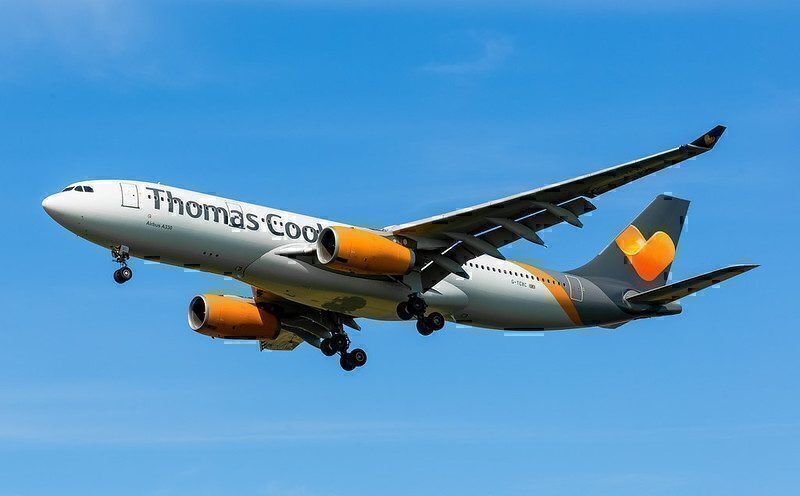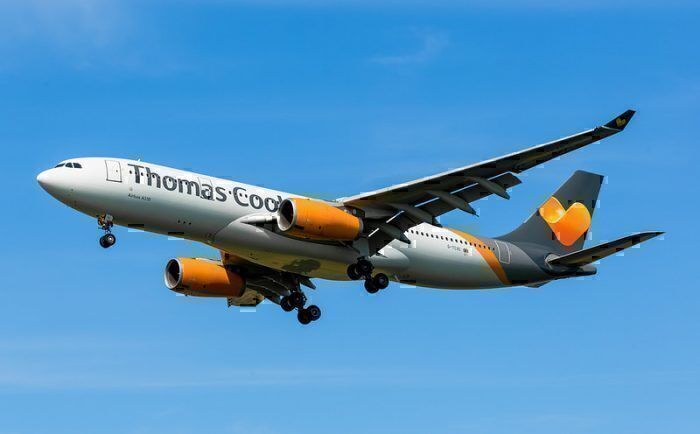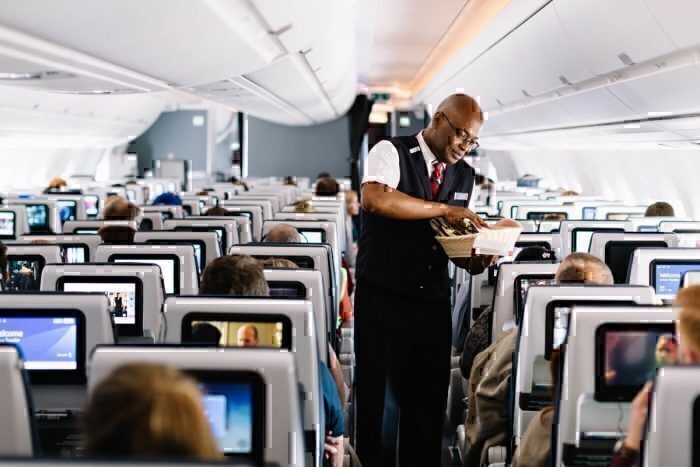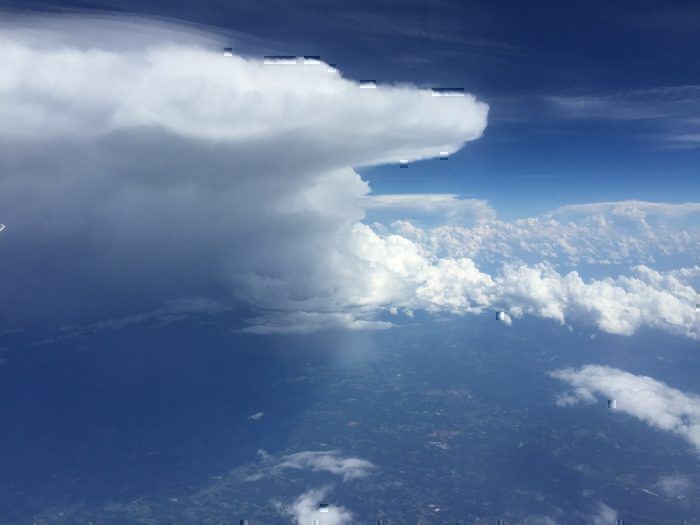A Thomas Cook flight attendant was treated for a broken ankle upon arriving at Manchester Airport after her foot became trapped underneath a galley cart during sudden turbulence. Another attendant sustained a minor back injury. No passengers were hurt.
The incident
While on route MT-2915 to Manchester, UK from Varadero, Cuba on the 2nd of August of this year, an Airbus A330-200 encountered some severe turbulence. The aircraft, registration G-MLJL, was over the Atlantic Ocean, northeast of the Bahamas when the pilot announced over the PA system that all crew should immediately return to their seats.
The plane had encountered some dense cloud that suddenly and drastically increased turbulence. The pilot was already been aware of some weather systems and had switched from weather radar 1 to weather radar 2, to help identify the issues in the area. Additional steps had been taken when planning the route to avoid the worst of the weather.
The pilot had previously switched on the fasten seatbelts sign, so all 320 passengers were already seated. However, the 11 crew members were still operating in the cabin. In a statement, the AAIB said,
“Had the seat belt signs not already been illuminated, it is possible that more people would have been injured in the incident.”
The sudden change in cloud density at the time of the incident resulted in an altitude deviation of up to 500 feet. The turbulence lasted at least 90 seconds and sounds of hail hitting the aircraft could be heard. Although the captain announced for the crew to return to their seats, there was not enough time. The severe turbulence began just five seconds after his announcement.
Injury
Unfortunately for one cabin crew member, the captain’s announcement came too late. Unable to return her cart to its storage, the crew member applied the cart’s brake and tried to wedge it into a safe place temporarily, to allow her to return to her seat.
In the process of storing the trolley, her foot became trapped. As the turbulence began so suddenly, she was unable to free her foot and was only freed after the turbulence ended and her colleagues were able to come and assist her.
The crew contacted Medilink via phone to discuss the injury immediately after the captain deemed it safe to do so. Medilink provides medical assistance over the phone to aircraft in emergency situations and can help arrange special assistance before a flight for passengers with special needs. Despite Medilink diagnosing a fractured ankle, the flight continued to Manchester, arriving safely in the UK over seven hours later.
Another flight attendant was also treated upon arrival for injuries to her shoulders and back. The injuries were not apparent immediately after the incident and were classed as “minor”.
Damage to the aircraft
The aircraft had been experiencing light turbulence for some time before the incident, which prompted the captain to turn on the fasten seatbelt sign. A large weather system had been identified by the onboard radars and the crew were taking measures to avoid the weather system when the sudden turbulence occurred.
As a result of the hail impacting the nose of the aircraft, the radome was damaged and the aircraft had to revert to using weather radar 1 for the remainder of the flight. The second radar was no longer working.
Predicting bad weather
In the AAIB report of the incident, it states that a forecast for the flight shows "occasional, isolated and embedded cumulonimbus (CB) clouds” for the first two and a half hours of the flight. Cumulonimbus clouds can indicate the presence of thunderstorms, hail, ice and turbulence. The report concludes that “The flight crew were aware of the risks associated with CB clouds”
So, although the incident resulted in two unfortunate injuries, the situation itself is not highly unusual. It does serve as a reminder that all the forecasting, radar technology and route planning can sometimes not be enough to predict mother nature.




